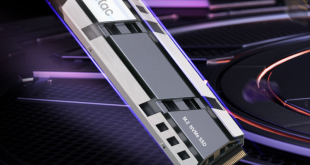Unigine provides an interesting way to test hardware. It can be easily adapted to various projects due to its elaborated software design and flexible toolset. A lot of their customers claim that they have never seen such extremely-effective code, which is so easy to understand.
Heaven Benchmark is a DirectX 11 GPU benchmark based on advanced Unigine engine from Unigine Corp. It reveals the enchanting magic of floating islands with a tiny village hidden in the cloudy skies. Interactive mode provides emerging experience of exploring the intricate world of steampunk.
Efficient and well-architected framework makes Unigine highly scalable:
- Multiple API (DirectX 9 / DirectX 10 / DirectX 11 / OpenGL) render
- Cross-platform: MS Windows (XP, Vista, Windows 7) / Linux
- Full support of 32bit and 64bit systems
- Multicore CPU support
- Little / big endian support (ready for game consoles)
- Powerful C++ API
- Comprehensive performance profiling system
- Flexible XML-based data structures
We use the following settings: 1920×1080 resolution. Anti Aliasing off. Anisotrophy 4, Tessellation normal. Shaders High. Stereo 3D disabled. API: Direct X 11.
All systems deliver good overall results, with the Core i7 970 system significantly out in front with an average of 74.4 frames per second. The Sapphire A85XT powered system today averages 65.2 frames per second, still perfectly smooth.
 KitGuru KitGuru.net – Tech News | Hardware News | Hardware Reviews | IOS | Mobile | Gaming | Graphics Cards
KitGuru KitGuru.net – Tech News | Hardware News | Hardware Reviews | IOS | Mobile | Gaming | Graphics Cards





Wow! Very nice review. Good job AMD! Really liking this a lot! This is more competitive compared the bulldozers and piledriver processors.
Its quite an ugly looking motherboard on a colour scheme level (not important to some I guess). thankfully they seem to be improving their bioses. been following their motherboards here since they started doing them….
Its quite an ugly looking motherboard on a colour scheme level (not important to some I guess). thankfully they seem to be improving their bioses. been following their motherboards here since they started doing them….
I like this new range of low end processors from AMD, they perform really well. anyone remember ATOM? yeah, not fondly. it was sh$t
That SATA arrangement seems unnecessary. I can only assume the engineering wiring on the multi layer PCB had to be routed a specific way making the layout impossible for level port positioning.
I suppose you could use the angled connectors, although they might still connect with a larger graphics card.
Who uses mSATA however? the drives are very expensive.
would make more sense if they did a mini itx version of it for media centers only.